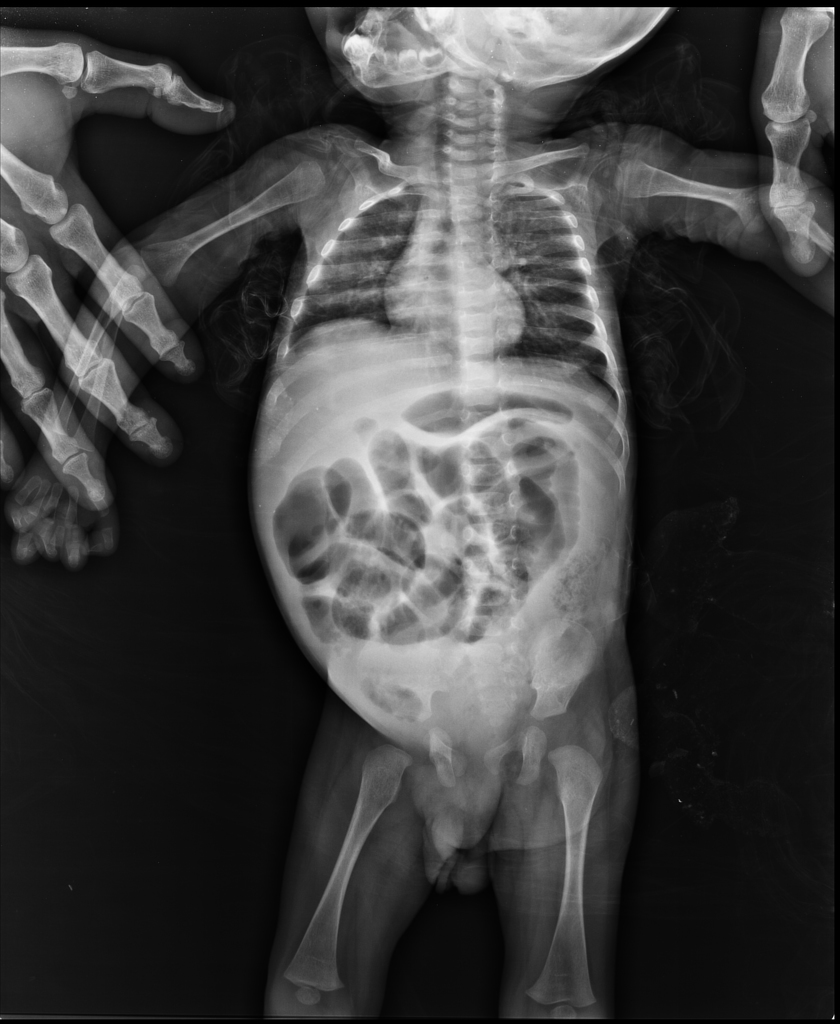Hirschsprung's disease x ray: Difference between revisions
Jump to navigation
Jump to search
Tarek Nafee (talk | contribs) No edit summary |
Tarek Nafee (talk | contribs) No edit summary |
||
| Line 11: | Line 11: | ||
* The colon is usually difficult to identify accurately, and gas is usually absent in the rectum. | * The colon is usually difficult to identify accurately, and gas is usually absent in the rectum. | ||
[[Image:Hirschsprungs-disease.jpg|300px|left|Moderate distention of the descending colon with smooth delineation, this distension is secondary to short markedly stenotic segment seen in the proximal sigmoid colon as well as reduced calibre of the remaining sigmoid colon and rectum.]] | [[Image:Hirschsprungs-disease.jpg|300px|left|Moderate distention of the descending colon with smooth delineation, this distension is secondary to short markedly stenotic segment seen in the proximal sigmoid colon as well as reduced calibre of the remaining sigmoid colon and rectum.]] | ||
<br style="clear:both" /> | |||
==References== | ==References== | ||
{{Reflist|2}} | {{Reflist|2}} | ||
{{WH}}{{WS}} | {{WH}}{{WS}} | ||
Revision as of 15:32, 16 June 2017
|
Hirschsprung's disease Microchapters |
|
Diagnosis |
|---|
|
Treatment |
|
Case Studies |
|
Hirschsprung's disease x ray On the Web |
|
American Roentgen Ray Society Images of Hirschsprung's disease x ray |
|
Risk calculators and risk factors for Hirschsprung's disease x ray |
Editor-In-Chief: C. Michael Gibson, M.S., M.D. [1] Associate Editor(s)-in-Chief: Aditya Ganti M.B.B.S. [2]
Overview
X-ray abdomen is the primary modality of choice in diagnosing Hirschsprung's disease. Findings include decreased bowel caliber of the involved segment along with colonic distension.
X-Ray
Abdominal Xray findings associated with Hirschsprung's disease may include:
- Radiography performed in children with Hirschsprung disease yields findings similar to those in other forms of low small bowel obstruction: variable gaseous distention of the colon and small bowel, often with air-fluid levels.
- The colon is usually difficult to identify accurately, and gas is usually absent in the rectum.
